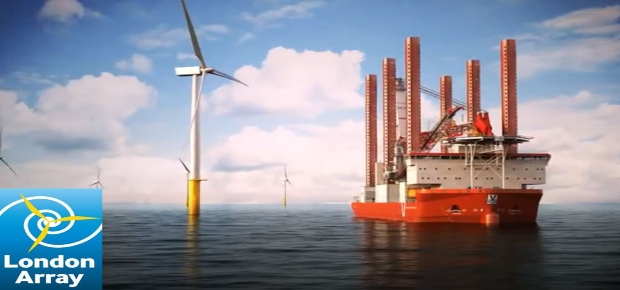Offshore Wind Farm Construction
Secondary | Energy | Views: 6712
Watch this film made by Marine Projects International (MPI) based in Middlesbrough all about the creation of electricity by wind turbines.
Would you be interested in further study and research in this area?
If you would like to research how the new, bigger wind turbines can create energy that is needed in the future, you could undertake a CREST Award and be able to gain a certificate for your project work.
If you have any questions, or would like to find out how you could get involved, email thestemhub@canterbury.ac.uk
Find below a series of supporting notes to accompany the Wind turbines film
- MPI were the first company to design, build and operate a custom-built vessel specifically for the installation of offshore wind turbines. The MPI Resolution was a world leading turbine installation vessel (TIV), designed in Europe and built in China.
- The first deployment was to assist in the construction of North Hoyle Offshore Wind Farm (OWF) off the coast of North Wales in 2004. It has been fully tasked on other OWFs ever since. In the trade it is referred to as a ‘self-propelled jack-up rig’.
- The film shows the basic construction activities required to build any offshore wind farm. In this particular instance the London Array is shown.
- This OWF is situated in the mouth of the Thames Estuary and until recently was the largest OWF in the world. It comprises 175 wind turbines producing an output of 630MW when the wind speed is approximately 15m/s (34mph). It cost £1.8bn to build.
- The position of the London Array is in the outer Thames Estuary. In the film, the port of Harwich is shown to which all the equipment and material was shipped ready for collection by the Adventure used to construct the offshore wind farm.
- The MPI Adventure shown in the film is a second generation TIV, larger than the Resolution and with bigger cranes to lift bigger turbines. Wind turbines are getting bigger all the time and both the Resolution and the Adventure are not large enough, and do not have big enough cranes to install the huge offshore wind turbines recently developed. They are still used for maintenance work on older wind farms and other offshore construction and repair activities.
- The TIV, self-propelled jack up rig is a manoeuvring itself into the exact required position using the satellite global positioning system often referred to as GPS. The ship manoeuvres using azimuth thrusters at the stern. These are electrically driven propellers that can rotate through 360 degrees and push the ship in any direction. The ship does not need rudders. The bow of the ship is moved using bow thrusters. These help to get the bow of the ship in the exact required position by pushing the bow to port (left) or starboard (right).
- The azimuth and bow thrusters are slaved to the GPS which sends them the signals to get the ship into the exact desired position. Once in the desired position the ship lowers its jacks onto the seabed then jacks itself up. You can see details of the jacking device in the film.
- The first activity shown is laying the subsea cables. Lines of turbines are connected together using subsea cables one end of which is connected to an offshore substation. There are several lines of turbines connected in this way. The substations have transformers which increase the voltage and transmit the power to shore.
- In the case of the London Array, the power is transmitted via long subsea cables to a substation at Graveney (Kent) where it is fed into the National Grid.
- The cables are laid and buried by a remote operated vehicle on the seabed. The remote operated vehicle (ROV) is supplied with power and controlled from the TIV above. The buried cable is pulled from a reel on the ROV.
- After the cable has been laid, the monopile foundations (which are steel tubes of about 5 metres diameter) are lifted using the 400 tonne crane on the TIV and placed vertically on the seabed. The monopiles are hammered into the seabed to a depth of 20 to 30 metres using a 1000 tonne hydraulic hammer. Next the yellow transition pieces carrying the platform, ladders and cable tubes attached are placed over the monopiles.
- The TIV can carry cables and foundations for about 6 wind turbines at a time. After it has unloaded and installed six cables and foundations it will return to Harwich to collect and install another 6. This will be repeated until all the 175 foundations have been installed.
- After installing all the foundations, the wind turbines are collected from Harwich approximately 6 at a time. These are taken to the wind farm site and installed on the foundations using the TIV crane. The tower is installed first. The nacelle containing the generator is next then the three turbine blades are installed. Once this is done the work of the TIV is complete.
- The turbines are then tested and set to work generating electricity to be sent to the National Grid.
« Back
 Go to Canterbury Christ CHurch University's website
Go to Canterbury Christ CHurch University's website
 Go to Canterbury Christ CHurch University's website
Go to Canterbury Christ CHurch University's website
